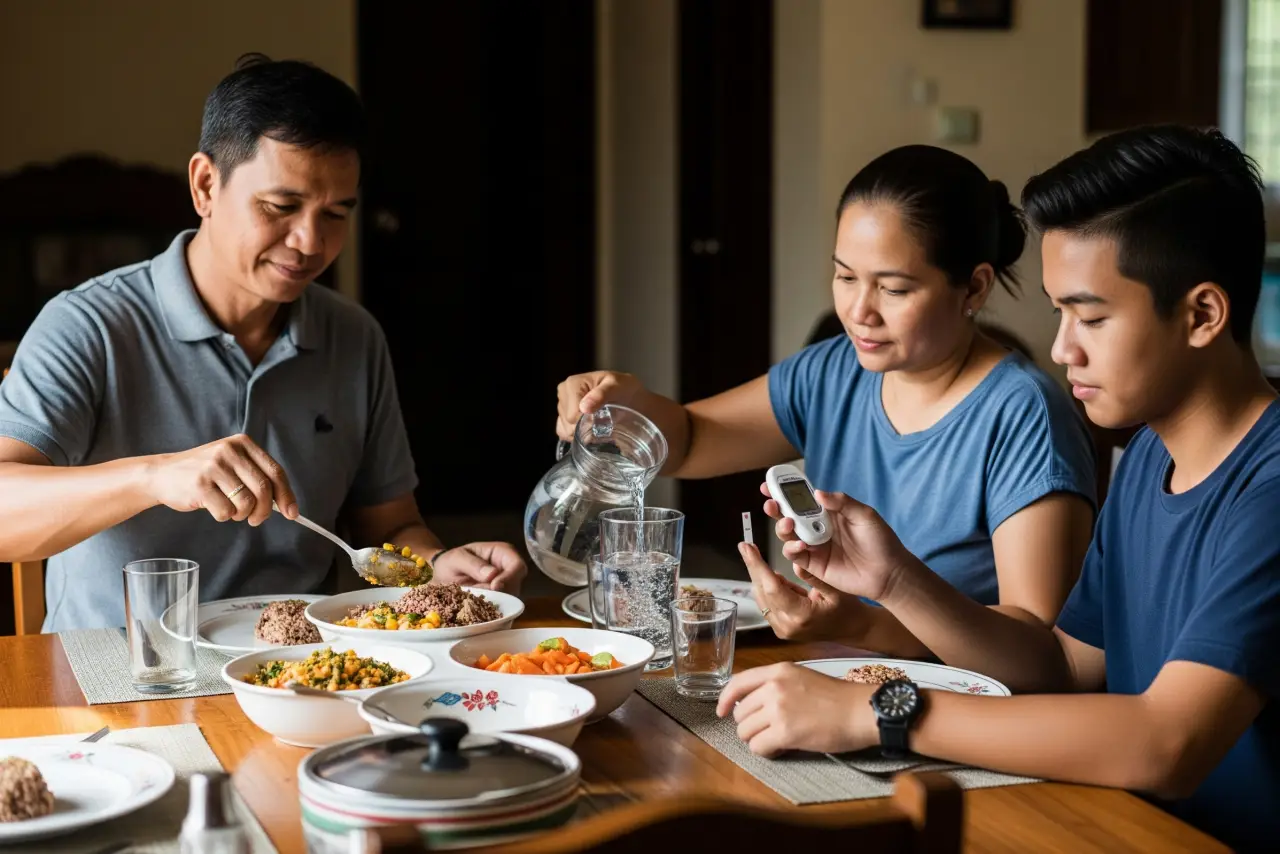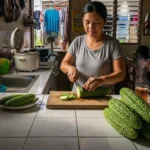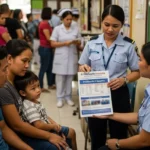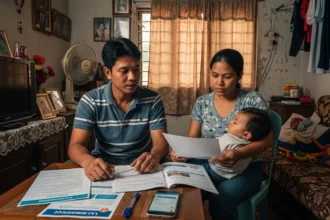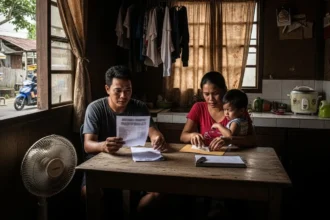👩👩👧 “Kamusta ang Blood Sugar Mo?”
At a Filipino fiesta or family reunion, you’ll almost always hear someone say: “Mataas ang sugar ko.” Maybe it’s a tito refusing leche flan, or a tita reminding you, “Bawal ka na sa pangalawang serving ng bibingka.” For many families, diabetes isn’t just medical jargon – it’s a lived reality.
Type 2 Diabetes has quietly become a silent epidemic in the Philippines. Almost everyone knows a parent, sibling, or close friend struggling with it. And yet, many still believe “Namamana lang ’yan” (it’s just genetic).
Here’s the truth: while heredity plays a role, our lifestyle and daily choices (pamumuhay) play an even bigger one. The good news? That means we can do something about it.
This guide will explain Type 2 Diabetes in a simple, no-drama way, and show you practical, culturally relevant steps for diabetes prevention in the Philippines.

🔍 Ano ba Talaga ang Type 2 Diabetes?
🍬 The “Asukal sa Dugo” Explained Simply
Think of your body’s cells as bahay. The sugar from the food you eat is the groceries that need to enter the house so your body has energy. The one holding the susi (key) to open the door is insulin, a hormone made by your pancreas.
But in Type 2 Diabetes:
-
Sometimes, there aren’t enough keys (your body isn’t making enough insulin).
-
Sometimes, the locks have become rusty (your cells are resistant to insulin).
The result? Instead of entering the house, the sugar just floats around in your blood. Too much asukal sa dugo (high blood sugar) over time can damage your heart, kidneys, eyes, and nerves.
It’s not just about sweets – even ordinary rice or bread eventually turn into sugar once digested. That’s why managing diabetes isn’t only about cutting dessert, but about understanding how food, movement, and lifestyle all play a role.
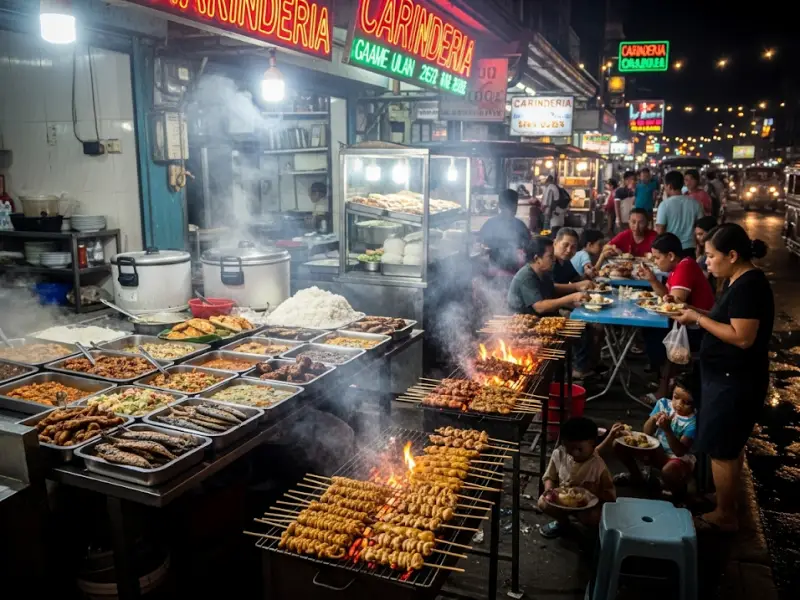
Why Are Filipinos Prone to Diabetes?
Type 2 diabetes has become so common in the Philippines that many call it a “silent epidemic.” Here are some cultural and lifestyle reasons why Pinoys are especially vulnerable:
🍚 Rice Is Life Factor
Rice isn’t just food – it’s identity. From silog meals at breakfast, to lunch with adobo, to midnight snacks of lugaw, rice is always on the table. Many Filipinos eat 2–3 cups per meal, sometimes with extra rice when ulam is tasty.
The problem: white rice is a high glycemic index (GI) food, which means it quickly breaks down into glucose (sugar) in the bloodstream. This leads to blood sugar spikes followed by energy crashes – harmful in the long run, especially when eaten in large portions.
👉 Fact: A Harvard study found that eating 150 grams (about 1 cup) of white rice daily increases the risk of Type 2 Diabetes by 11%. For Asians, who eat rice more often, the risk is even higher.
No one is saying “bawal ang rice” – but portion control and healthier swaps (like brown or red rice) can lower risk significantly.
🧬 Genetic Predisposition
Studies suggest that Southeast Asians, including Filipinos, are genetically predisposed to:
-
Store fat more efficiently. This was useful centuries ago when food was scarce – our bodies conserved energy to survive famine.
-
Develop “thin-fat” syndrome. Some Filipinos look slim but have high visceral fat (fat around internal organs), which increases diabetes risk even without obvious obesity.
👉 Example: A 2019 study in Diabetes & Metabolism Journal showed that Asians develop diabetes at lower BMIs compared to Western populations. A Filipino at “normal” weight might already have insulin resistance.
This means lifestyle matters even more – we can’t rely solely on looking “payat” as a sign of health.
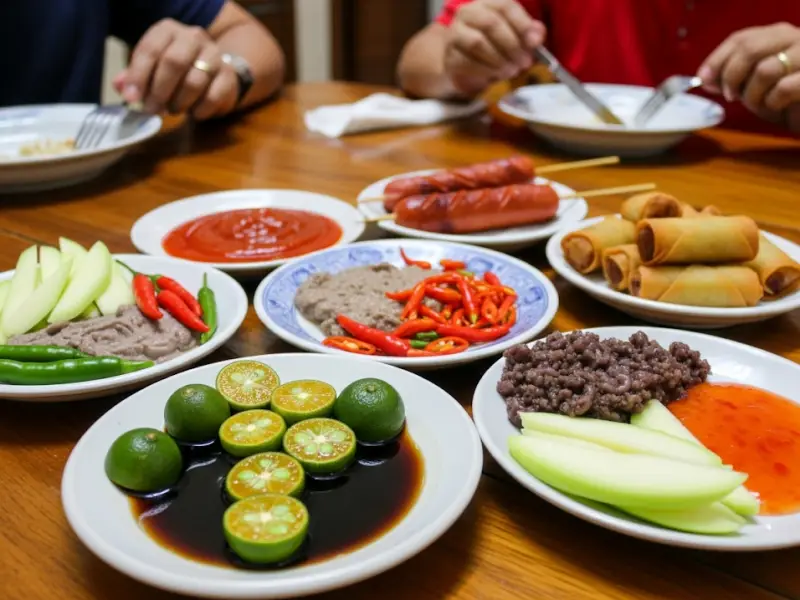
🥢 Culture of Sawsawan
No Filipino meal feels complete without sawsawan: toyo with calamansi, patis with sili, ketchup for hotdogs, bagoong for mangga, sweet chili sauce with lumpia. But here’s the catch:
-
Toyo, patis, and bagoong → high sodium → raises blood pressure.
-
Banana ketchup and sweet chili sauce → high sugar + sodium combo.
Many don’t realize that these condiments, while eaten in small amounts, add up daily – silently stressing both blood sugar and the heart.
👉 Tip: Use vinegar, calamansi, or fresh herbs as flavor boosters – big taste, less risk.
🪑 Sedentary Lifestyle
Generations ago, Filipinos farmed, fished, walked long distances, and did manual labor. Today, many of us spend hours sitting in jeepneys, buses, offices, and at home in front of screens.
👉 Fact: The World Health Organization (WHO) lists the Philippines among countries with rising physical inactivity, with less than 30% of adults meeting daily activity requirements.
Even house chores have become easier – washing machines, rice cookers, food delivery. Convenience is good, but it means less daily movement, which slows metabolism and worsens insulin resistance.
Small everyday activities – walking instead of commuting short distances, taking stairs, or doing chores – can add up to diabetes protection.
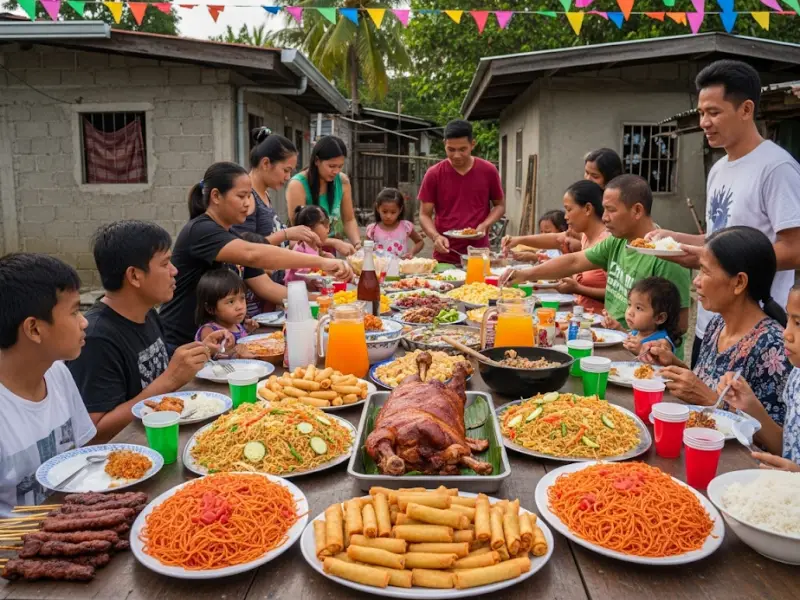
🎉 Fiesta Mentality
In the Philippines, every milestone is a handaan – birthdays, baptisms, graduations, barangay fiestas, even simple reunions. Tables overflow with:
-
Lechon, crispy pata, kare-kare → high fat, cholesterol.
-
Halo-halo, leche flan, bibingka → high sugar.
-
Spaghetti with sweet sauce → carbs + sugar combo.
The frequency and large portions make it harder for the body to recover between indulgences.
👉 Example: A single cup of sweet-style Pinoy spaghetti can have the same sugar content as a can of soda. Pair that with rice and dessert, and you’ve got a blood sugar overload in one sitting.
💡 Bottom Line:
Filipino culture is rich, vibrant, and food-centered – which makes us prone to diabetes. But awareness is power. With small, intentional changes (rice control, mindful portions, more galaw, healthier sawsawan), we can keep our traditions alive without sacrificing our health.
📊 Table: Why Filipinos Are at Higher Risk
| Risk Factor | Pinoy Connection |
|---|---|
| Rice-heavy diet | 2–3 cups per meal, “unli-rice” culture |
| Genetics | Strong family history common |
| High-sodium/sugar | Love for sawsawan & sweet drinks |
| Lifestyle | Long commutes, sitting jobs, less exercise |
| Fiesta culture | Frequent rich food celebrations |
⚠️ Mga Senyales na Dapat Bantayan (Signs to Watch Out For)
One tricky thing about Type 2 Diabetes is that its symptoms often creep in quietly. Many Filipinos dismiss them as “normal lang ’yan, pagod lang” or “signs of aging.” But these are actually red flags your body is waving – and catching them early can save you from serious complications later.
🚻 Pabalik-balik sa C.R. (Frequent Urination)
If you find yourself urinating more often, lalo na sa gabi, it’s not just a “weak bladder.” High blood sugar forces your kidneys to filter and flush out excess sugar, which drags water along with it. This leads to more trips to the CR and, in some cases, even dehydration.
👉 Tip: If you wake up multiple times at night to pee, don’t ignore it. It’s one of the earliest warning signs of diabetes.

💧 Laging Uhaw (Excessive Thirst)
Because your body is losing more fluids through frequent urination, you feel constantly thirsty, no matter how much water you drink. This is called polydipsia, a hallmark of diabetes.
👉 Example: If you find yourself drinking water, juice, or soft drinks all day but never feeling “quenched,” it’s time to get checked.
⚖️ Biglaang Pagpayat (Unexplained Weight Loss)
Some people think sudden weight loss is a blessing, but if you’re not dieting or exercising, it can be a warning sign. When your cells can’t absorb sugar for energy, your body burns fat and muscle instead – leading to unintentional weight loss.
🍽 Laging Gutom (Increased Hunger)
Even after eating, you feel hungry again soon. This happens because the sugar from your food stays in the blood instead of entering your cells for energy. Your body keeps signaling hunger, thinking it needs more fuel.
👁 Panlalabo ng Paningin (Blurred Vision)
High blood sugar causes fluid to shift in and out of your eye lenses, affecting your ability to focus. Blurred vision may come and go, but over time, uncontrolled diabetes can lead to permanent eye damage or even blindness.
🖐 Pamamanhid ng Kamay at Paa (Numbness or Tingling)
This is an early sign of diabetic neuropathy, or nerve damage caused by prolonged high sugar levels. It usually starts in the feet and hands. Left untreated, it can worsen into chronic pain or loss of sensation – making wounds harder to detect.
🩹 Sugatang Matagal Maghilom (Slow-Healing Wounds)
If small cuts, blisters, or even mosquito bites take forever to heal, high blood sugar may be impairing circulation and immune function. This is why diabetics are prone to infections and, in severe cases, amputations.
😴 Laging Pagod (Chronic Fatigue)
Feeling weak or exhausted even after 7–8 hours of sleep is a red flag. Without enough insulin function, your cells can’t properly use sugar for energy, leaving you drained throughout the day.
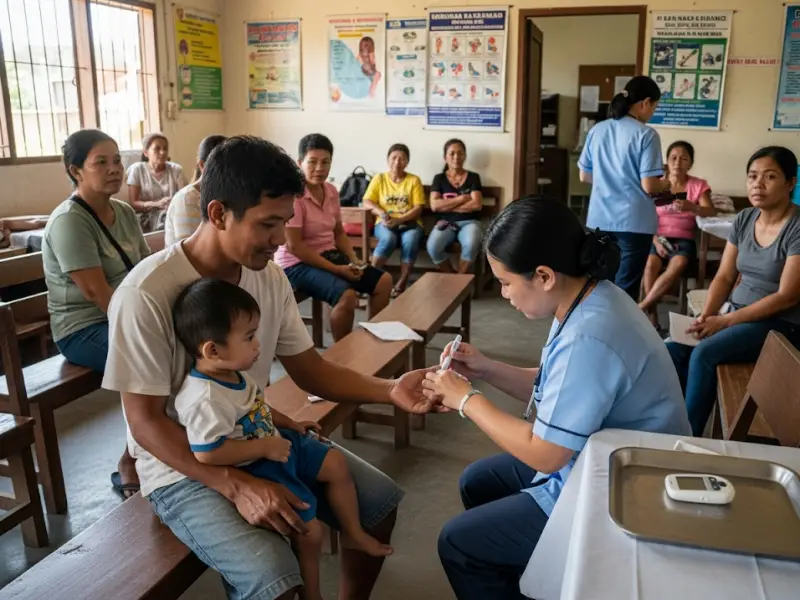
⚠️ Importante
Here’s the danger: some people show no obvious symptoms at all. Many Filipinos only discover they have diabetes after a serious complication – like a heart attack, kidney problem, or eye disease.
👉 That’s why regular blood sugar checks are vital, especially if:
-
Diabetes runs in your family.
-
You’re overweight.
-
You’re over 40 years old.
🛡️ The “Kontra-Diabetes” Action Plan: Pinoy-Style Prevention
Prevention doesn’t mean depriving yourself of all the food you love. It means making smarter, sustainable choices that protect your health while still enjoying life.
🍽️ The Food We Eat: Reimagining Pinggang Pinoy
Rice Control 101
-
Limit rice to 1 cup per meal (skip the “extra rice”).
-
Switch to brown or red rice for more fiber and a steadier sugar release.
-
Follow the Veggie-First Rule: fill half your plate with gulay before scooping rice.
Drink Water, Ditch the Sugar
-
Cut back on soft drinks, powdered iced tea, 3-in-1 coffee, and energy drinks.
-
Switch to plain water, black coffee, unsweetened tea, or fresh buko juice (no added sugar).
Go for Good Carbs & Fiber
-
Eat more kamote, gabi, malunggay, kangkong – affordable and diabetes-friendly.
-
Fruits like saging, papaya, pinya are healthy, but enjoy them in moderation.
Choose Healthier Cooking Methods
-
More of: nilaga, inihaw, pasingaw (steamed).
-
Less of: pritong ulam and oily dishes – keep them for special days, not daily fare.
📊 Typical Pinoy Choices vs. Healthier Swaps
| Common Choice | Better Option | Why |
|---|---|---|
| 2–3 cups white rice | 1 cup brown rice | Lower sugar spike |
| Soft drinks daily | Water or buko juice | No added sugar |
| Fried longganisa | Grilled fish | Less fat, more omega-3 |
| Sugary merienda | Fresh fruits | Fiber + vitamins |
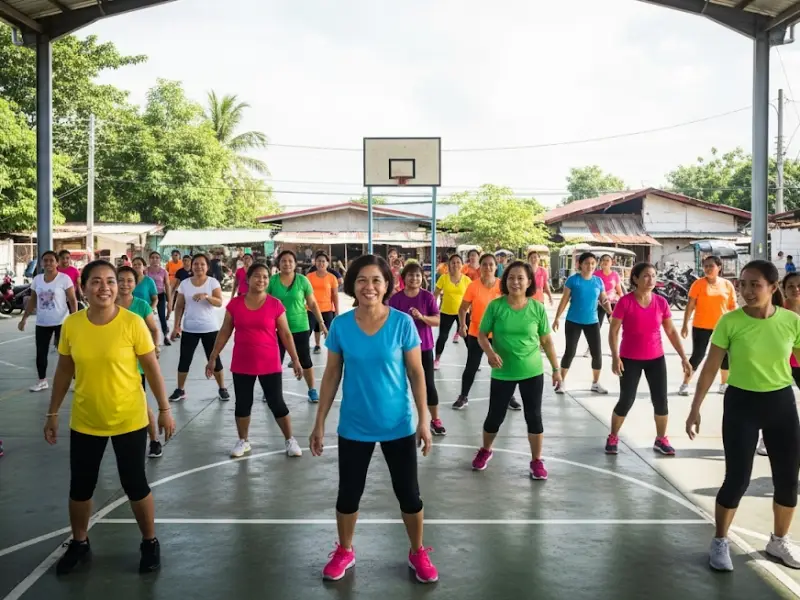
🏃 Get Moving: Galaw-Galaw Para Hindi Pumanaw
You don’t need a gym membership – everyday galaw counts.
-
Walking is a superpower. Just 30 minutes a day can lower blood sugar.
-
Household chores count. Paglilinis, paghahalaman, paglalaba – all burn calories.
-
Find your fun. Join a Zumba class, shoot hoops, or dance with your kids.
-
Commute hacks. Take the stairs, or get off one jeep stop early and walk the rest.
🌙 Lifestyle Tweaks
-
Matulog ng sapat. Aim for 7–8 hours per night. Kulang sa tulog messes with hormones that control blood sugar.
-
Manage stress. Pray, listen to OPM, journal, or talk to a kumare. Stress pushes blood sugar higher.
-
Know your numbers. Barangay health centers often give free BP checks. Ask your doctor about blood sugar or HbA1c tests to track your risk.
📚 Frequently Asked Questions
🧬 Is Type 2 Diabetes genetic?
Partly, yes. If you have a family history, your risk is higher. But lifestyle choices – what you eat, how much you move, and how you manage stress – play a bigger role in prevention.
🍚 Can I eat rice if I’m at risk?
Yes. Rice is not the enemy – but too much is. Stick to 1 cup per meal, and whenever possible, try brown or red rice for steadier sugar control.
🍌 Is it true that fruit is bad for diabetics?
Not at all. Fruits like saging, papaya, and pinya are healthy in small portions. The key is moderation – avoid overripe or overly sweet fruits in large amounts.
🩸 What’s HbA1c?
It’s a blood test that shows your average blood sugar over 3 months. It’s more reliable than just one fasting sugar test and helps doctors track long-term control.
🔄 Is it possible to reverse Type 2 Diabetes?
It can’t be completely “cured,” but many Filipinos manage it so well through diet, exercise, and medicine that their sugar levels stay near normal.
🥤 Are sugar-free drinks safe?
Safer than soda, yes. But they’re not a free pass – some still affect cravings and digestion. Water is still the best choice.
🧪 How often should I get tested?
-
If you’re 40+ or overweight, test once a year.
-
If you have family history or other risk factors, test even earlier.
🍰 Do I need to avoid all sweets?
Not completely. Enjoy them on special occasions, but balance them out: eat smaller portions and pair with protein (like nuts or egg) and veggies to slow sugar spikes.
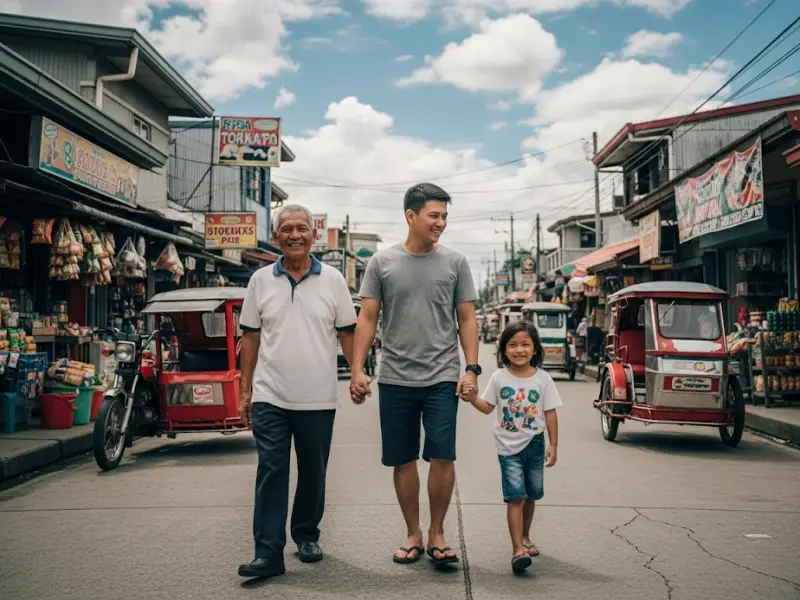
❤️ Ang Kalusugan ay Kayamanan
Preventing Type 2 Diabetes is not about giving up everything you love. It’s about balance and making smarter, consistent choices.
Every time you choose water over soda, gulay over chicharon, walking over sitting – you’re not just protecting yourself. You’re giving your family the greatest gift: more years with you.
Remember: You don’t have to change everything overnight. This week, start with one small step – maybe switch one soda for water, or take a 15-minute walk. Simulan mo sa maliit na hakbang.
Kaya mo ’yan, Kabayan. Your health is your wealth – for you and your family.
🍎 References
- Hello Doctor PH – Common Myths About Type 2 Diabetes, Debunked
- Metro.Style – Diabetes Explained: Why Type 2 Diabetes is Hitting Filipinos
- MakatiMedicalCenter Blog – 3 Habits to Develop for Proper Diabetes Management
- ABS-CBN News – Diabetes myths, easing Filipinos’ fears with facts
- St. Luke’s Health Library – Understanding Diabetes Mellitus



